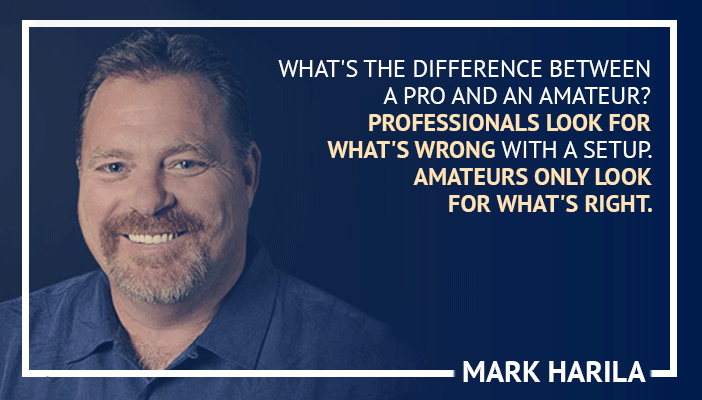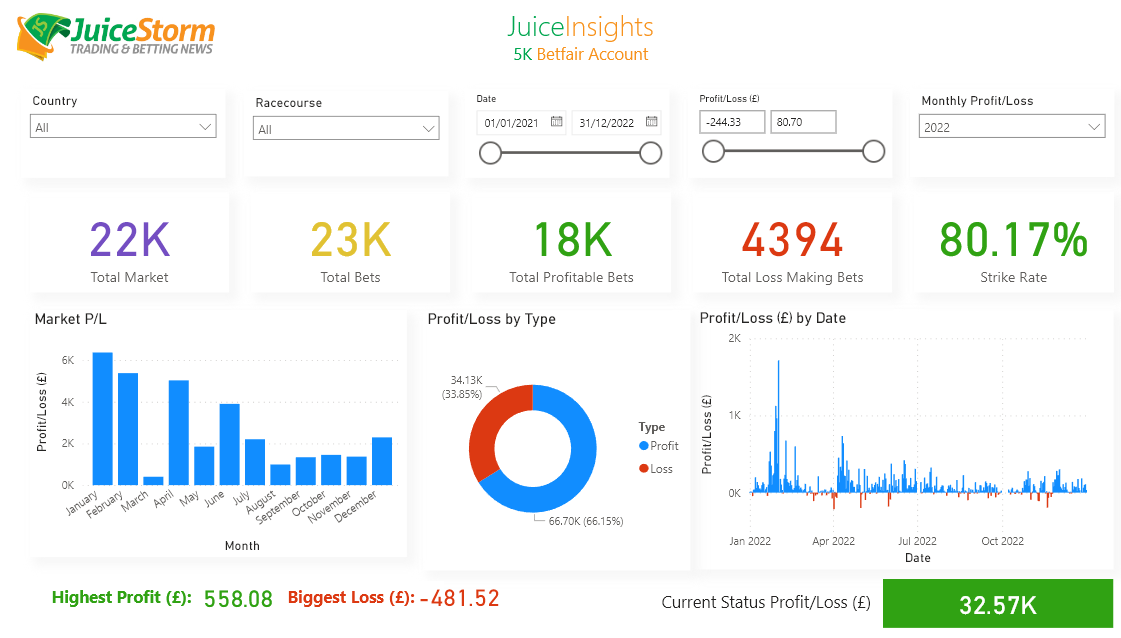Beginners Guide to Trading On Betfair
- The TopTrap Greyhound Profit And Loss Account On Betfair - March 17, 2022
- Betfair Best Execution – 11 Requested & Filled At 320 - January 16, 2022
- BTB System e-book - March 13, 2015
The concept of trading, with its associated language and different types of specialized software can be quite intimidating for novices. I do not profess to be an expert trader by any means, but I have made a small consistent profit from trading horses over the past 18 months, so I thought I would pass on some of the things I have learned during that time.
Trading is not for everyone. It is stressful and time consuming, and some people find that it is incredibly frustrating. You need to spend hours watching what happens to the odds in the types of markets you are interested in before you start to trade them – there really isn’t any substitute for experience. You can learn quite a lot from reading articles and watching videos, but you also need hands on practise. My aim with this article is to help you avoid the very basic mistakes and to help you decide if this is really what you want to be doing, whether the risk v reward is worth it to you.
What is trading?
Betfair and other betting exchanges give you the option of backing or laying, and this opens up the possibility of doing both at different times, hoping for a change in price in the right direction, and making a profit as a result.
While the basic concept is easy to grasp and it sounds very easy to do, in fact trading has developed into quite a complex and tricky art, because people have designed bots and software to take advantage of the most obvious situations where trading should give you a profit. In addition there are people out there who manipulate the markets using “spoof” money, large sums which appear suddenly in an attempt to move the market in a particular direction. These can disappear as fast as they appear, but it is often not easy to tell the difference between spoof money and real money until it is too late. When trading you are swimming in shark-infested waters and you need to have your wits about you or you will get eaten alive.
One thing trading is not is a quick, easy risk free way to make a guaranteed large profit. Some very skilled traders can make it appear that this is the case, but all trading is risky, and some is very risky indeed. Trading is not something that you can easily set up and leave – unless you set up a stop loss position it requires constant monitoring.
Trading terms
Green up – to hedge for a profit over all selections (green book).
Hedging – to equalize profits or losses across all selections in the event regardless of the result. Many trading softwares have a “hedge” facility which will do this at the touch of a button.
Red Up – to hedge for a loss on all selections (red book).
Scratch – to cancel out a trade by placing the opposite bet at the same odds, or to cancel the bet before it is matched
Stop loss – a bet placed (usually with the aid of trading software) to guarantee that you will not lose more than a specific amount on a given trade. Stop losses are not infallible, particularly in play, for various reasons.
Tick – the difference between the two closest prices at Betfair. Tick size depends on price, it is small at low prices and increases as the prices get bigger. At around 2.5 for example the tick size is 0.02, whereas at around 5 it is 0.1 and at around 11 it is 0.5.
WOM (weight of money) – the amount of money queuing above or below the current odds.
Types of trades
There are several different ways in which you can trade, depending slightly on what it is you are trading. There are many variations on these themes but the basic types are:
Scalping
Scalping is the term used to describe very short term backing and laying, usually just one tick apart, to take multiple very small profits. This sort of trading is suited to fast moving markets such as pre-race horses or in play events. You can scalp on slower markets, but the profits from one tick trades probably aren’t really worth the time sitting watching. Bigger profits are made at higher odds where tick sizes are larger, but if the trade goes against you the losses are bigger too. There is a video illustrating the technique of one tick scalping here.
Swing trading
Swing trading involves backing your judgment not only as to which way the price is going to move, but also how far. A back or lay bet is placed at the current price and a counter bet is placed several ticks away. This is far more risky than scalping since there is no guarantee that the swing will happen, and in general the longer you stay in the market the more potential there is for something to go wrong. You can swing trade fast or slow moving markets, and swing trades result in bigger profits, but also bigger losses when things go wrong. Swing trades can be placed over much longer timescales than scalping, for example you may decide in March that a horse is a good price for the Derby (June), and back it ante post, with the intention of laying it off after it has won one of the trial races in the spring. Large odds differences can be obtained in this way, but of course if your horse doesn’t win its trial the odds can fly out, and if it is withdrawn from the Derby for some reason you lose all of your money. Swing trading is well illustrated in this video (in which you can clearly see the use of fake “spoof” money by traders to hold the price or move it in the desired direction). Note the difference in the length of time that your trade remains open in the market compared with the scalping video.
Cross market trading
Cross market trading uses back and lay bets on more than one market, for example correct score and over/under markets to attempt to create a no lose position. This is slightly more complicated than single market trading because if you back and lay the same selection in the same market you only pay commission on your overall profit, whereas if you back something in one market and back something else in a different one, and one of the bets wins, you pay commission on the whole of the winnings in that market, even though you have lost something in the other one. Calculations for this sort of thing are therefore complicated and need to be done with care. In addition, trading software cannot green up for you across two markets – it has to be done manually. There is an example of cross market trading on football in this video.
Getting Started
The first and most important thing to do is to set aside a bank for trading that you can afford to lose. Without in any way intending to sound pessimistic, it is highly likely that you will lose it – most novice traders blow a bank or 2 while they are learning. You must learn to emotionally detach yourself from the money, because your emotional and psychological state will critically affect your trading. So consider your bank as spent – regard it as payment for learning how to trade. At this stage if you make a profit it is a bonus. I started with £100 in a new Betfair account, so that my trading bank couldn’t get muddled with my other betting money. Betfair do not mind you having several accounts, so it makes sense to do this and it makes keeping track of your bank extremely easy.
Decide what you want to trade. I made the mistake of trading almost any market I could find when I started out. I watched all the videos, and had a go at the horses, the football, the tennis, laying the draw, laying the field and so on. I soon realised that I was trying to be a jack of all trades and master of none, and I settled down to trade what I feel most comfortable with – horses. You may be happier trading football – it can be done while you are watching the match, which you may well be going to do anyway. Whilst there is nothing wrong with experimenting, trading does require some knowledge of what is happening and why the odds are doing what they do. With most sports a bit of research is required – it isn’t just a case of piling in to the numbers at the last minute. Horses are one of the few exceptions to this – you can scalp pre-race horses on the basis of the numbers alone. If you try it with football trading strategies sooner or later you will get badly burned as football trading requires research.
Don’t expect every trade to be a winning trade. Sometimes you will lose. Its part of the game and impossible to avoid. You need to learn when to scratch the trade, and do it quickly, and when to settle for a loss, and do that equally quickly. All of my biggest losses have been due to me waiting for the odds to come back when I should have got out as soon as things started to go wrong. Never, ever chase losses. Accept the loss and move on. If you feel upset, frustrated, angry or cheated by losing, STOP. Go for a walk, go to the gym or do something completely different, anything to get rid of that pent up emotion. Similarly don’t allow a good win to give you a feeling on invincibility or recklessness. It is extremely easy to lose it all and more on the next trade by trying to be clever. Trading is all about discipline. Set out your rules and stick to them. ALL gamblers see what could have been if only…. and trading is no exception. There will be plenty of times when you could have done better by waiting longer, and you will tend to forget the times when your actions saved the day and waiting for more would have been very expensive.
Scratching trades
One of the most important things to learn to do is to scratch trades quickly if they are going the wrong way. This is particularly true of scalping, where fractions of a second can mean the difference between getting out without loss and having to take a loss. Scratching includes both cancelling an unmatched bet and placing a counter bet at the same odds, depending on whether your first half of the trade has been matched or not. I have seen articles by experienced traders advocating spending time placing bets and scratching them again as practise before you start trading. While I wouldn’t quite go that far, it does emphasize the importance of doing this. I probably scratch over 50% of the trades I start. I would much rather scratch and be wrong than not scratch and be wrong – protecting your bank has to be the first priority. For a graphic demonstration of what can happen if you don’t scratch your trade quickly, watch this video about trading a horse race.
Stake Size
I cannot emphasize enough how important it is to start with small stakes. Most of the trading videos you will see are using large stakes of £100 or more. These people are very experienced traders whose videos are probably advertising a service and are therefore designed to impress. When you are inexperienced the tendency is to freeze in a panic if the market starts to move against you. If you have placed a £2 bet and freeze it may cost you a few pennies to close the trade for a loss. If you do the same with a £100 bet not only do you lose proportionately more for every tick in the wrong direction, but also it is much harder to get £100 matched than £2. In some circumstances the fact that £100 appears may itself affect the market, whereas £2 is most unlikely to.
Hedging
The simplest way to trade is to back and lay the same amount. This will mean that you have zero profit/loss on all of the selections except the one you have traded, and all of your profit or loss on the traded selection:
However, if you have built up a nice profit on a horse and not hedged it, and it loses, all of that work has gone to waste. Most traders like to hedge their profits and losses across all selections, so that you either win something whatever happens, or lose a little instead of risking losing a lot on the wrong result. There are variations of this – you can bias your returns in favour of one result while still hedging part of it – it is entirely up to you. The screenshot below shows the result of hedging the 60p profit on The Which Doctor shown above by laying 11p at 5.4:
One way of hedging is to use the “what if” figures on Betfair to show you what the result of placing a particular bet will be. (There is information about how to set up Betfair to show what if figures in this post.) The problem with this, unfortunately, is that Betfair will not calculate the what if figures if you put in less than £2 as the stake. One way round this is to hedge when you place your 2nd bet, using the what if figures. The screenshot below shows the use of the what if figures to hedge a £5 bet at 26 by placing a £5.65 lay at 23:
You need to use trial and error to do this, so it is rather slow, and I would go so far as to say it is nearly impossible to trade effectively in a fast moving market using what if figures. If you do find yourself wanting to hedge a few pennies you will need to know how to place a bet below Betfair’s minimum stake – we have a video available with instructions here. This takes 3 times as long as placing a single bet.
For me this is a no brainer – unless you are trading slow moving markets like football, you need trading software. The massive advantages of using this are that the prices you see are much more recent, it will calculate the hedge figure for you and it will do all the work to place less than £2 automatically and quickly.
Trading Software
This screenshot illustrates several aspects of trading software which give the trader an advantage over using the Betfair website. This is BetTrader Evolution (Evo), but many of these features can be found on all of the trading softwares. This is ladder view, allowing you to see many more prices than the conventional Betfair grid. At the bottom of the ladders you will see the stake buttons – I have got my default stake set at £10 here, which means that if I click on a price a £10 back or lay is automatically placed at that price, depending which side of the ladder I click. This is vastly quicker than loading a betslip and typing 10 then submitting the bet. Bets can be cancelled with 1 click too. In this screenshot I have had £7 lay matched at 8.4 and the price has then gone up. the green and red figures alongside the prices on that ladder show me exactly how much I will win or lose on each selection if I close my trade at that price, and if I click on one of those coloured figures the correct amount to hedge the trade will be placed at that price, again with just one click. This gives you a massive advantage over trying to use what if figures on Betfair.
Most of the trading softwares (including Evolution) give a free trial so you can experiment and choose the one you like best. The full version of Evolution also has a “training” mode where you can experiment and test ideas using a bank of imaginary money. Whilst not being foolproof, this gives a fair representation of what would have happened if you had used real money, as long as the trial bets you submit are a sensible size.






Comments are closed, but trackbacks and pingbacks are open.